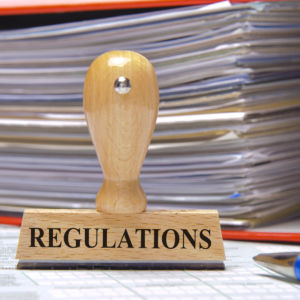Despite accounting for nearly 50 percent of total employment in the U.S. and a similar percentage of GDP, small and medium sized businesses face a huge stumbling block in the form of a regulatory system that fails them. For one or more of three reasons the regulatory system fails these business owners because: 1) it is overly burdensome; 2) the system’s structure isn’t being followed by the very government that put it in place; and 3) it is overly focused on enforcement rather than assistance for those seeking to comply.
This is a scenario that is experienced first-hand by the nation’s network of chemical distributors. While chemical distribution is often thought of as “big business,” most members of the National Association of Chemical Distributors (NACD) are small businesses, typically averaging around 26 employees.
It is these very businesses that have proven to be the backbone of our economy but that disproportionately bear the largest impact of regulations. According to the U.S. Small Business Administration Office of Advocacy, it costs small firms 364 percent more than large firms to comply with federal environmental regulations. Small businesses simply do not have the dedicated resources to monitor and plan for unclear, rapidly and unexpectedly changing regulations.
However, even large companies will join the chorus of small ones attesting to the fact that the system as we know it is overly burdensome. Since 2005, the number of economically significant regulations – those carrying a price tag of $100 million or more – has increased by more than 60 percent. The 2015 Federal Register contained more than 3,300 final rules and 2,300 proposed rules. These eye-popping figures are on top of the guidances and memos – not included in the Federal Register but released by the agencies – that have a material impact on the way we and other industries do business.
To be sure, small businesses across the country seek to comply with the regulations, however burdensome. Even when acting in good faith, though, they often face a scenario where the goalposts are constantly being moved. For example, in June of last year, rather than following the normal course of inviting public comment and conducting cost-benefit analyses through the formal rulemaking process, the U.S. Occupational Safety and Health Administration (OSHA) substantially expanded the universe of chemical manufacturers and distributors subject to the Process Safety Management (PSM) standard through an enforcement memorandum. In doing so, the agency imposed new, immediate PSM requirements on companies without the benefit of input from stakeholders.
In addition to the burdens placed on them and the fact that they’re facing a constantly evolving system, small businesses are now facing a problem with agencies that focus their resources almost solely on enforcing regulations rather than helping companies comply. In recent years, several agencies have shifted resources from compliance assistance to hard enforcement and have increased penalties against industry. The number of new regulatory initiatives combined with the intensity of the agency efforts to find and fine has created a regulatory tsunami for chemical distributors.
Fortunately, many industries have forged ahead to help their members comply through programs like NACD Responsible Distribution® or the American Chemistry Council’s Responsible Care program. For example, Responsible Distribution, which is celebrating its 25th anniversary this year, mandates third-party-verified environmental, health, safety and security audits that demonstrate members’ commitment to continuous performance improvement in every phase of chemical storage, handling, transportation and disposal.
These are important programs that support industry education and compliance, but to truly spur growth and innovation we must ensure that policy changes to longstanding regulations are made with input from stakeholders via the rule making process and that agency actions on the regulated community serve to foster growth. Only with this sort of regulatory certainty can small and medium sized businesses continue to thrive and provide good-paying, locally focused jobs while remaining committed to operating in a safe and responsible manner.

